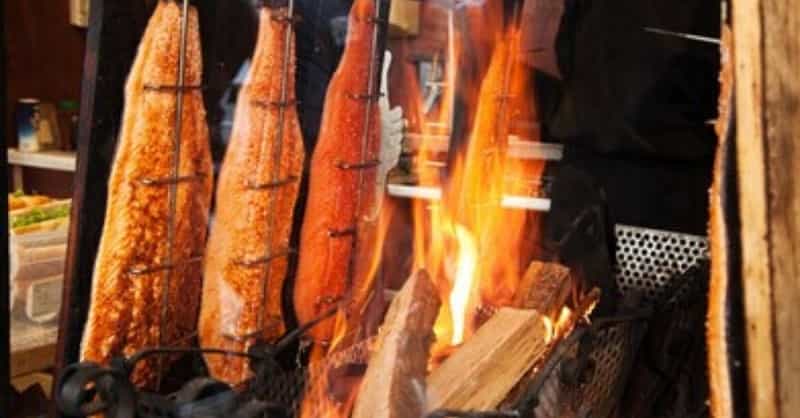Salmon is a fatty fish with mild and refreshing flavor. The taste, however, will depend on the way you cook it. Low-sodium soy sauce, honey, brown sugar, garlic, ginger, herbs, and spices are commonly added depending on what a recipe requires. You can also choose from a variety of cooking and preparation methods, but one of the best would be through smoking.
If you choose to smoke salmon, one of the most important considerations is your choice of wood. If you have no idea on what to choose, keep on reading and we will have a quick rundown of some of the top options that should be on your list.

What is the Best Wood for Smoking Salmon?
For those who are new to smoking, choosing the right wood can be a difficult task. To make things easier, take note of our recommendations below.
Oak
It is impossible to talk about woods for smoking without mentioning oak. This is a default choice for smoking, and it can also do well when it is used for salmon. It has a medium smoky flavor, making it more balanced compared to what you can expect from hickory. It burns very hot, so you also have to watch out on the temperature since smoking requires a low temperature.
Hickory
Like oak, hickory is another common default choice when it comes to woods for smoking. This is the right choice for people who like intense flavors. This will remind you of bacon. It can have an aggressive and bitter flavor, so watch out when using this for salmon. Since salmon has a subtle flavor, hickory can be overpowering if you use more wood than what is necessary.
Alder
Salmon has a light flavor, and if you would like to keep it that way, you should choose woods with subtle flavors. With this, alder is a good choice, which is known for being sweet and light. There is a smoky sweetness without being too overwhelming. This is a great choice for almost any fish because of its light flavor.
Apple
If you are looking for something that is stronger than alder but milder compared to oak and hickory, then you won’t go wrong with apple. This fruitwood has a mild and subtle sweet flavor. It has an intense smokiness. It will also make a great choice if you want something to blend with stronger hardwoods.
Maple
The sweet smoke of maple will make it perfect to complement the subtle flavor of salmon. It has a delicate flavor that does not overpower the original flavor of salmon. There are no thick layers of smoke when you are using maple, which also means that there will be no bitterness in your fish. It can also do well when combined with alder, apple, and oak.
Cherry
It may not be as popular as most of the options above, but cherry will make another great choice for smoking salmon. This versatile smoking wood imparts a sweet and mild flavor in salmon while giving it a mahogany color. To make the flavor richer, you can combine it with oak or alder.
A Step-by-Step Guide on How to Smoke Salmon
Now that you have an idea on what wood is best to use, follow the steps mentioned below. Even as a beginner, it will be easy to smoke salmon like a pro.
- Start by curing the fish. Use salt to brine the fish. This is an important process as it will add saltiness to the salmon while also getting rid of excess moisture. Cure the salmon for at least four hours. Do not cure the fish for more than 48 hours. Otherwise, it will end up being too salty.
- Take the fish out of the brine solution and dry.
- Once the salmon is dry, you can now proceed to smoking. Make sure that your smoker is clean. Pre-heat the smoker. Start with a low fire, ideally about 140 to 150 degrees Fahrenheit for at least an hour. On the final hour, you can increase the temperature to up to 175 degrees Fahrenheit.
- After an hour of smoking, baste the fish. This is an important part of the process to avoid the salmon from being dry. This also infuses additional flavors to the salmon.
- Once you are done smoking, let the salmon cool and store as necessary.
Conclusion
Picking the best wood for smoking salmon can be an overwhelming task for many, especially for newbies. You will have tons of options, but this does not mean that you can choose any wood. At the end of the day, it all boils down to personal preference. Your choice will depend on the intensity of the flavor that you want in the fish.
Leave a Reply